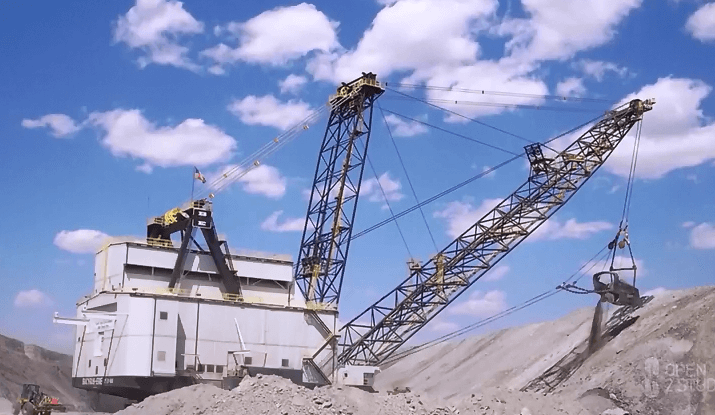
In the previous topic, we saw that blasting is the mining operation used to break the rock mass in order to facilitate the removal of the overburden. We saw that some of the main equipment used to remove the overburden are truck lines, trucking shovels, excavators.
In this topic, we will look at some of the characteristics of these excavation metals, and at which deposits they are more suited. Truck and shovel excavation systems are very common and efficient methods in surface mining.

They are very adaptable to change in peak geometry in the advent of variations to geology or to sudden failures. They involve a relatively low capital cost and additional equipment can be obtained at short notice. In addition, they have higher resale value.

On the other hand, this system involves high fuel costs due to the low haulage capacity and high maintenance. Working draglines are very common machines in an open cast mining, especially coal mining, with tabular or shallow dipping coal seams. They are very cost effective technology. They are electric and they do not involve any fuel costs compared to the truck and shovel technology. They have a high productivity when operating at maximum efficiency, and they’re a very economic system for the stripping of shallow coal seams.

On the other hand, draglines cannot be used for steeply dipping deposits. They are quite inflexible to changes in excavations and geometry. All geologic conditions in a deposit must be known prior to and they can train the selection to a particular dragline. The high capital cost and time of delivery for a dragline prohibits variation scheduling of operations. Draglines have a low resale value due to geometric limitations of equipment. They have a very slow crawling speed, therefore, mining sequence and downtime planning are critical.
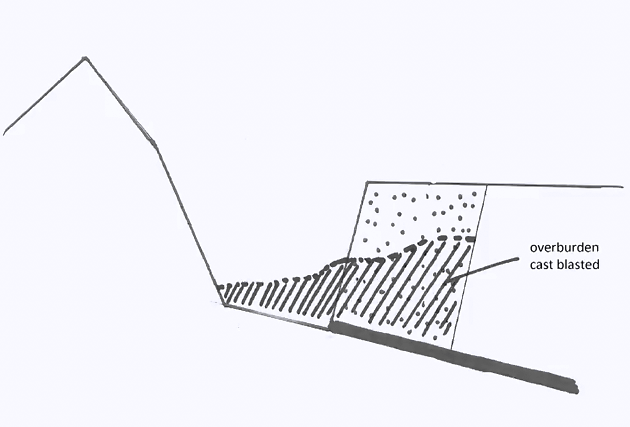
Finally, they require very specialised maintenance personnel. In this image, we can see a sketch of the principal components of a dragline – the body of the machine, the boom, the dragline bucket, and the ropes for moving it and dragging the material. A truck and shovel is favoured over a dragline system in the following cases: The coal is too steep, or too deep, for a dragline; the overburden is too weak to support the dragline operation. And we will see, in a few instances, that pre-stripping of weaker sediments of the superficial layer is often done using shove; and excavators and transporting material to a separated dump. Another situation that is favourable for truck and shovel systems is when there is toxic material in the overburden that requires controlled extraction and dumping. Finally, we should remember that dragline are not used to remove the coal seam.
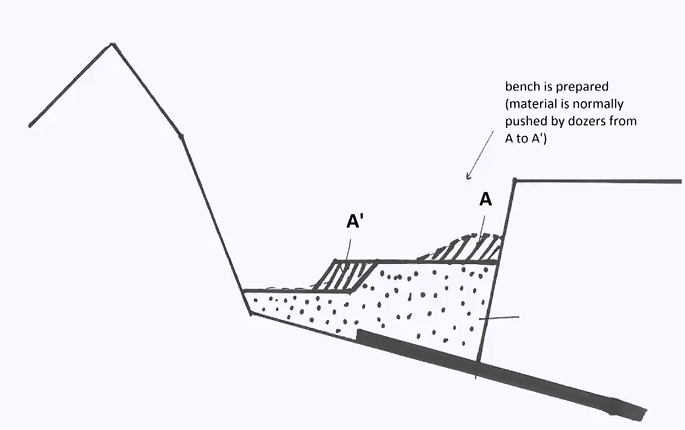
A common dragline excavation method is called the key bridges or the key blocks. Variation of this method exists depending on the equipment and the geometry of the deposit. Let’s have a look at the main steps of this method.
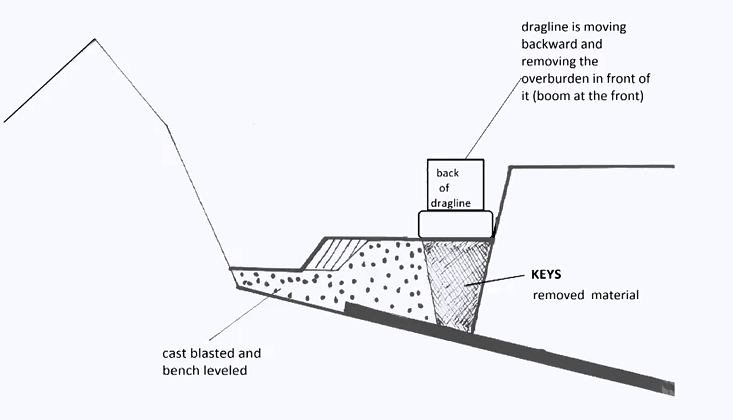
As we can see in this image, at the beginning, we have the surface and he coal seam at a defined depth. In the first instance, it is necessary to remove the top layer of superficial sediments and the first quantity of overburden in order to provide a void for the next strip’s blasted material. This is the removal of the so-called box cut, normally carried out by excavators and shovels that excavated superficial weather material and the first overburden. The material is removed and taken to a dump. Once the box cut has been removed, the rock material lying on top of the coal is cast blasted as far as possible from the initial position, as we saw in the previous topic. The blasted material is moved by dozer. In the figure, the material is moved from an initial position A to a final position A1. The bench needs to be levelled in order to allow the dragline to be positioned on top of a flat surface and excavate the remaining overburden and uncover the coal.

Once the bench is adequately prepared, the dragline can be positioned on top of it and it can start the removal of the overburden – a longer direction, and uncover the high wall. We imagine that the dragline is going backwards. The removed material is called waste and it is moved from position B to position B1. If we look at a situation in plain view, we can observe the dragline shown as a purple rectangle, moving backwards, removing the overburden in front of it and leaving the coal uncovered.
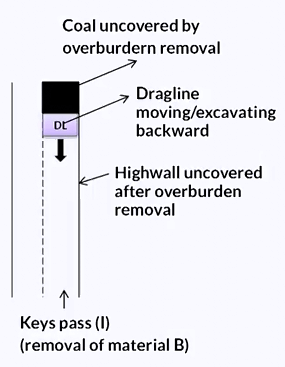
In the image, we can see the high wall indicated. In a coal mining term, high wall refers to the unexcavated or phase of exposed overburden and coal in a surface mine. End walls are also slopes that are excavated, or excavated faces. They are located at the end of a strip and generally oriented 90 degrees to the high wall.

Finally, at the end of the keys, the dragline builds a bridge to access the blocks. The low wall opposes the high wall and it usually consists of the excavated coal floor overlaid with dumped material. The high wall is left uncovered from the key pass.

The dragline then works to the end of the blocks and commences excavating the block pass moving, again, backwards. The excavated block pass material creates the final profile. That, you can see simplified in the plan view with an oval. This is the final configuration for the simplified description of the method.
https://youtu.be/ZAghXPBo4Js
In the next topic, we will look at some of the main safety issues related to complex mining excavations.
